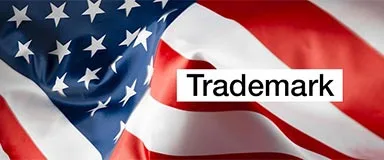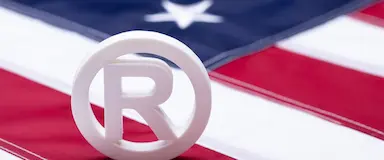Discover the best ways to protect your trademark and reduce the risk of any trademark infringements or fraud involving your brand.

Your cart is empty
*Online Support: Mon-Fri, 9am-5pm (GMT-4). For assistance anytime, send us a message
Protect Your Brand in the United States Through a Simple Process Backed by Certified Local Attorneys
Before filing your trademark in the United States, you must evaluate any issues that may arise during the registration process. Our Comprehensive Trademark Study not only lists similar trademarks (graphic and phonetic) that may conflict with yours but also provides you with an Attorney's opinion on the trademark registration possibilities and the class(es) that your goods/services belong to.
Specialized attorneys will file your trademark application in the United States and carry out all the necessary formalities to bring your application for approval and registration. As soon as your trademark is filed, we will send you a filing report that will include the application number and application date. Also, we will send you a scanned copy of the filed application.
Discover how our services help protect and strengthen your brand in the United States.
Check if your trademark is available for registration with our easy-to-use search tool.
Search TrademarkRenew your trademark to maintain uninterrupted protection for your brand.
Renew TrademarkSafeguard your local domain with ease through our trusted partner, Register.Domains.
Search .US Domains
Discover the best ways to protect your trademark and reduce the risk of any trademark infringements or fraud involving your brand.

Complete step-by-step guide to registering a trademark with the USPTO in 2025. Learn filing requirements, costs ($350 base fee), timelines (12-18 months), and maintenance requirements.

Learn answers to some of the most commonly asked questions on trademark registrations to improve your trademark knowledge.
Does United States offer an Extensive Trademark Study, and what does it include?
If I previously filed my trademark in another country, can I claim priority in United States?
How long does it take for a trademark to be registered in the United States?
Do I need to provide a Power of Attorney?
What details are required for a trademark application in the United States?
To file a trademark application in the United States, you must include details about the applicant, the trademark itself, and the goods or services linked to the trademark.
What is the fee for submitting a trademark application in the United States?
The expense of filing a trademark application in the United States depends on various factors, such as the kind of trademark and the number of classes it includes.
For more details and a comprehensive pricing breakdown, please see our Price List.
How long does it take to receive a trademark registration certificate in the United States?
The process to receive a trademark registration certificate in the United States typically takes about 2-3 months once the trademark is approved for registration.
What are the steps involved in processing a trademark application after it has been submitted in the United States?
Once a trademark application is filed in the United States, it goes through several stages. First, it is examined to ensure it meets all necessary filing requirements. Before submitting, it's important to carefully check the trademark for clarity, formality, uniqueness, and any potential conflicts to prevent rejection. After the examination, the …
What rights do I gain by registering a trademark in the United States?
When you register a trademark in the United States, you gain these rights:
Can a registration be canceled in the USA?
You can request to cancel a registered trademark if any of the following issues are present:
What steps must I take to meet the trademark use requirement in the USA?
To meet the use requirement, you need to use your trademark within three years of its official registration date. This means you must actively use the mark in business or commercial activities within the United States.
What are the requirements for a specimen or proof of use to be deemed acceptable in the USA?
A specimen or proof of use is a real example showing how your trademark is used in business with the goods or services listed in its description. It provides concrete evidence of your trademark's use in the market.
The USPTO's criteria for acceptable proofs of use include:
Do I need a US address to apply for a trademark in the United States, which is found in the USA?
No, having a US address is not required to submit a trademark application in the United States.
When do you need to provide a translation and transliteration for a trademark in the United States?
When you apply to register a trademark that includes words in a language other than English, you must provide an English translation of those words. This rule also applies if the trademark is a combination of words where at least one is non-English and can be clearly identified. The translation …
When applying for a logo or combined mark in the USA, should you include color as a feature of the mark?
When deciding whether to include color in a logo application in the USA, think about how much protection you want and how important the colors are to your brand.
If you don't claim color, your logo will be filed in black and white, meaning it's protected in all colors. This …
What is a Statement of Incontestability in trademark law in the USA?
A Statement of Incontestability is a declaration by the owner of a trademark registered on the Principal Register, confirming the mark's validity and registration. It asserts the trademark owner's exclusive right to use the mark for specific goods and services. For a trademark to be considered "incontestable," it must have been …
Do I need to use my trademark in the USA before applying for registration?
To register a trademark successfully, you need to be using the mark in business or have a genuine plan to use it soon. Once your trademark is accepted for registration, the Trademark Office will ask for proof that it's being used in business. At this point, it's crucial that your trademark …
Can you claim an earlier filing date for a US trademark application based on a prior application in another country, such as the USA?
"Claiming priority" is a process under the Paris Convention, an international agreement that allows trademark applicants to use an earlier filing date from one member country in another member country. If you file a trademark application in one member country, you can use that filing date for a new application …
How many trademark applications should I submit if my trademark includes both text and design elements in the USA?
The number of trademark applications you should file depends on your mark's features, your budget, and the level of protection you desire in the United States.
If your trademark has unique text and design elements (like graphics or logos) and you want to protect both, we suggest filing two trademark …
What does "Filing Basis" mean in the context of registering a trademark in the USA?
When you apply for a trademark in the U.S., you need to select a "Filing Basis." There are four main choices:
"Use in Commerce" Basis: Choose this if you're already using your trademark in the U.S. You'll need to provide the date you first used it and show …
What are the steps involved in registering a trademark in the United States, which is found in the USA?
The process of registering a trademark in the United States includes several key steps, all covered by our "Trademark Application Filing" service:
Can someone who is not a U.S. citizen or resident apply for a trademark in the United States?
Yes, non-U.S. citizens or non-residents can apply for trademark registration in the United States.
How long does a registered trademark remain valid in the USA?
Once registered, your trademark is valid for 10 years from the registration date.
How do I file a Specimen of Use for my trademark application in the USA?
Once your "Intent-to-Use" trademark application is approved, we will notify you that it's time to submit a "Specimen of Use." Typically, at this point, we ask for the specimen, which should be an image showing your trademark in real-world use. Acceptable examples of this specimen include a website, label, brochure, screenshot, …
What are the benefits of using a trademark in the USA before it is officially registered?
Yes, there are benefits to using a trademark before it's officially registered. In the U.S., you can use unregistered trademarks for your products and services. The law recognizes the first person to use a trademark or the first to apply for its registration as the rightful owner. You also gain common …
Does registering my trademark in the United States offer protection in other countries, including the USA?
When you register a trademark in the United States, it is protected throughout the whole country and its territories, including places like Puerto Rico, the Virgin Islands, the Northern Mariana Islands, Guam, and American Samoa.
What is the duration of the opposition period in the USA?
The opposition period begins when the application details are published online and lasts for 30 days. You can request an extension if needed.
What should I do if my trademark registration has been cancelled in the USA?
There are different reasons why a trademark might be cancelled, and each has its own solution:
Failure to Submit Required Maintenance Documents: If your trademark is cancelled because you didn't submit the necessary maintenance documents and fees, you cannot reinstate it. You will need to start a new …
How can I restore my trademark in the USA after it has been marked as abandoned?
An abandoned trademark application is one that has moved from active to inactive status. This can happen for several reasons, such as not responding to an Office action, missing the deadline to file a Statement of Use, or submitting an incomplete response.
During the application process, an examining attorney might …
Still have questions?